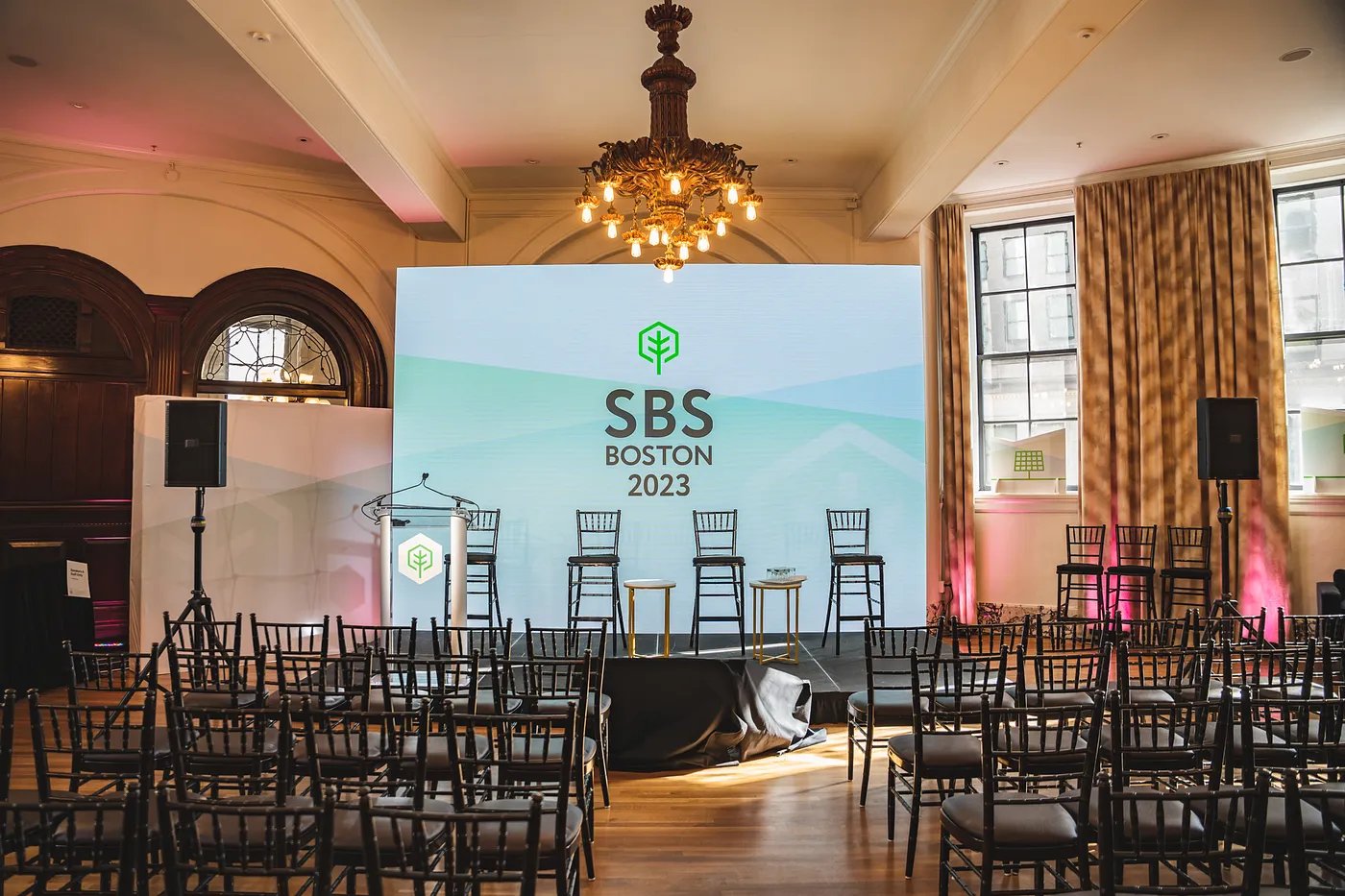
The dire consequences of climate change require innovative solutions now more urgently than ever before. In our previous blog posts, we’ve highlighted a lot of our work over the past year, including our efforts with the Sustainable Blockchain Summit (SBS). This year, we celebrated the one-year anniversary of SBS by bringing together some of the brightest minds in sustainability and Web3 to collaborate on these new solutions. SBS-Boston, held on April 13, 2023, marked an important milestone for the summit as it was the first to be hosted alongside a non-Web3 event, the MIT Energy Conference. The reason behind this decision was highlighted in the opening remarks by Filecoin Green team lead Dr. Alan Ransil, who emphasized that SBS needs to be a forum that includes both sustainability expertise and advanced Web3 and technical knowledge. People in both spaces have a deep understanding of what others’ blind spots are and if we’re to create robust solutions to address the climate crisis, we have to do it together.
Here are some of the key takeaways from the day:
Coordination is key
Alan’s opening remarks about cross-sector collaboration were a common thread throughout the day. The sheer magnitude of the problem we’re facing requires us to work together on a global scale, bringing together governments, industries, and individuals. This sentiment was echoed by multiple speakers including Jason Jay, senior lecturer and director of the Sustainability Initiative at MIT, and Sam Flanagan of Web3forGood. In Jason’s keynote, he emphasized that there is no silver bullet solution to the climate crisis. His demo of En-ROADS, a global climate simulator that allows users to explore the impact of various policies and actions, demonstrated that one single policy or direct action alone will not make the impact we need in reducing global warming and its effects. Instead, we must work collaboratively on multiple types of solutions and learn from other markets, industries, and traditional knowledge to make the progress we need. Sam’s talk also illustrated the need to embrace storytelling, diversity of thinking, and community engagement in our innovation efforts, both in the blockchain space and the traditional sustainability sector. At the heart of it all, coordination is simply a matter of organizing ourselves in an interdisciplinary way; we need to be willing to listen and learn from others, and to approach the challenges we’re facing with humility and open-mindedness.
Emphasizing Real World Impacts
The question of how to protect the environment while also empowering local communities has become more important than ever. In a talk given by Nirvaan Raganthan, Technology Lead for Climate Collective, he highlighted carbon project developers in India and South America who asked a crucial question: “Are you just installing robots in our forest? Or are you giving our community jobs, training, infrastructure, and prosperity?” This drives home the idea real-world impacts need to be fundamental in the tools and infrastructure we’re building. Akshay Yeleswarapu highlighted how Ostrom is thinking about real-world impacts, “If we can tie together these positive externalities with wealth creation and income generation for people who are contributing to these processes then we have achieved what we’ve set out to achieve.” The emphasis in the ReFi space going forward needs to be focused on deploying capital to people doing on-the-ground work and moving beyond the digital world into the real world with what we’re building.
Why Web3 Technologies
This Forbes article highlights a recent WEF report on how blockchain can not only make a difference in addressing its own energy usage but how it can play an active role in enhancing sustainability data standards more broadly. SBS-Boston further divulged the crucial role Web3 technologies have in enhancing transparency and interoperability in various industries, with a specific focus on the carbon markets and renewable energy space. As Simge Sandal from GainForest puts it, “Trust is good, transparency is better,” and this is especially true in the environmental asset space where carbon credits, RECs, and other ecological assets derive their value from the underlying data. To ensure a high degree of transparency, digital MRV (Measurement, Reporting, and Verification) has emerged as a game-changer. We can use smart sensors, satellites, and AI to streamline how we gather data relating to these real-world projects and utilize blockchain itself to improve how we standardize data collection, processing, and quality control. Digital MRV and blockchain not only increase transparency in this space but they can help move data quicker across supply chains and give us the ability to better track the provenance of data, something that will enhance trust in both the voluntary carbon markets and in the environmental social governance (ESG) world more broadly.
However, as previously noted, it is crucial that we are always coming back to the question of how are these technologies benefitting local communities and land in a way that is better than what’s being done already. Simge Sandal shared in the closing panel that one of the most important aspects of using Web3 tools with these communities is that these individuals now become the owners of the data they are collecting. This is unlocking new opportunities for these communities which was also highlighted by Angelo Kalaw of Celo mentioned in his closing remarks; Web3 technologies are not only opening up new financial products and services in DeFi but also enabling participation in things like the voluntary carbon market space that previously would have been inaccessible for these communities.
The final promise of Web3 technologies that was highlighted throughout the day was how instrumental blockchain can be when it comes to interoperability. Digital Gaia’s Ned Harvey reinforced the idea that interoperable infrastructure must underlie transparency. When we build interoperable systems, it helps to break down the silos that inhibit efficient collaboration, innovation, and progress, something desperately needed if we want to make progress toward reducing global warming in the next seven years. Interoperability has always been a fundamental building block of Web3 and is something that will be extremely beneficial for addressing issues of data fragmentation, lack of standardization, and the lack of speed that is currently plaguing the traditional sustainability space.
What’s Next?
These takeaways from SBS-Boston highlight the direction we need to collectively be moving in to start solving the wicked problems we are facing. The need for coordination and real-world impacts are also a big reason why we’re taking our next summit, SBS-Earth, fully virtual; There are incredible people and projects that are making progress on the ground and they need to be brought into these conversations. There is no better way to do this than by meeting people where they are, which is everywhere. The goal with SBS-Earth is that we aren’t just talking about these issues and promoting our own projects but that we are really delving into the questions of how the virtual world is influencing the real world and how we are unlocking coordination at a global scale to make real-world impacts, utilizing the benefits of Web3 technologies.
You can check out full recordings from SBS-Boston here! Be sure to sign up for our Sustainable Blockchain Summit newsletter for updates on SBS-Earth and visit us at SBS.Tech for more information on how you can get involved in future events.













